Even though solar panels get all the attention due to their good looks, it’s the inverters that hold all the brains in our Solar 101 series.
Solar panels generate an electric current by collecting photons from sunlight to excite electrons, pushing them into a circuit. The inverter then converts the electric field from direct current (DC) to alternating current (AC) so that the electricity is compatible with your appliances and the electric grid.
Besides this basic function, residential inverters these days perform a few additional functions. Recent innovations allow inverters to maximize electricity generation in complex sunlight installations. And now, inverters can even tell you how each individual solar panel is performing.
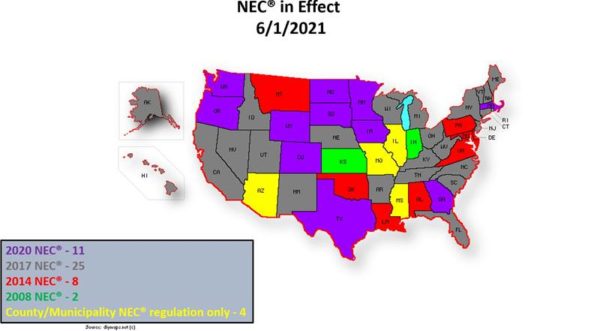
The other function required of inverters in the United States – found in Article 690 of the National Electric Code – is “rapid shutdown.” This function guarantees that your solar panels are no longer exporting electricity when the inverter detects that the solar panel system has been shut down for any reason.
This protocol was put in place after a fire in New Jersey was allowed to burn because firefighters were unable to determine whether or not the solar panels on the warehouse were still live.
Two solar inverter manufacturers, Enphase and SolarEdge, now dominate the residential solar market, in part due to this rapid shutdown requirement.
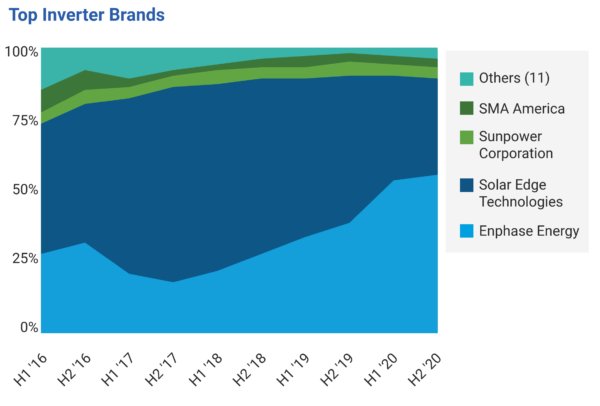
While rapid shutdown technology is offered by other manufacturers – SMA, Tigo, as well as newcomer Generac – they make up a smaller part of the market, at 10-15% cumulatively.
Microinverters and optimizers
The two dominant companies have very different inverter approaches – microinverters and optimizers – that meet the rapid shutdown requirements.
As mentioned earlier, the key feature of module-level power electronics – optimizers and microinverters – is that they maximize electricity generation on strings of solar panels that may receive different amounts of sunlight due to shade or because of the angle of the roof. These modules give your installation company significantly more flexibility when it comes to laying out your system.

Enphase offers microinverters, which means that their product places a small inverter behind every solar panel on your rooftop. These units connect to other Enphase hardware to create a family of components that power your home.
Placing inverters behind your solar panels means that the electricity is immediately converted from DC into AC on your roof.
SolarEdge’s approach connects multiple panels to a central inverter with smart modules called “optimizers.” Instead of converting the electricity from DC to AC, these units constantly monitor and adjust for the maximum power point of each panel, keeping them at a consistent DC voltage while varying the current.
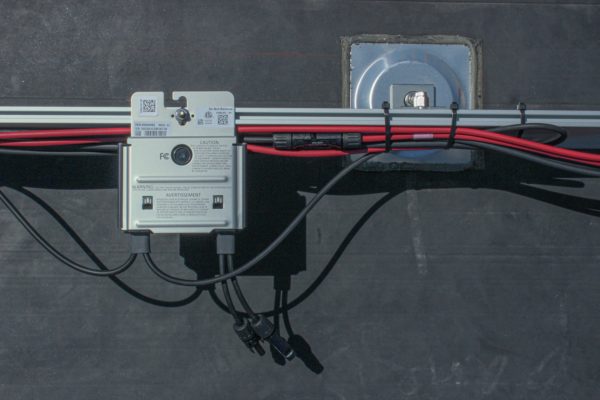
Solar panels are generally wired on a string in series. That means each panel depends on its neighbor to work.
Both micro-inverters and optimizers are designed to keep the solar system running even in the event of a panel failure. Before these “smart modules” were introduced, a single failure in a series of panels would knock out an entire string of 10 or more panels.
Enphase’s ability to keep a system running even after massive amounts of damage during a hurricane caught the attention of the Federal Emergency Management Agency (FEMA).
One downside to this new technology, however, is that it adds an additional piece of electronics to every solar module.
Linked-in
A second issue is that additional modules require additional connections between your rooftop gear. Connections are typically where solar issues arise, whether between the solar panels and racking system (as noted in the linked hurricane article above), or among the electrical gear, as occurred when Tesla was sued by Walmart.
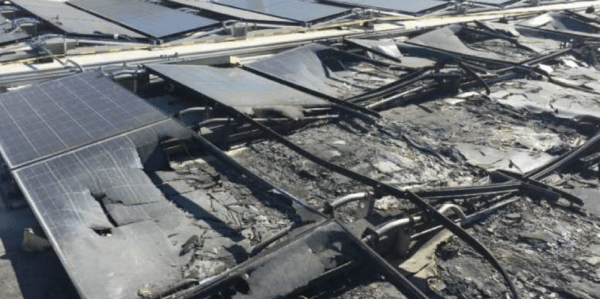
Inevitably, these electronic components have to do their job in harsh, hot, full sunlight conditions for decades on end. Thermal cycling and stress contributes to equipment failures, and can also loosen connections and mounts.
One last point about microinverters and optimizers – they cost a little more, however, they seem to pay for themselves.
The extra components roughly double the price of a standard residential solar inverter. The increased price has been offset by broadly declining solar prices and increasing efficiencies of solar panels. Generally speaking, there is still a net premium for a microinverter system.
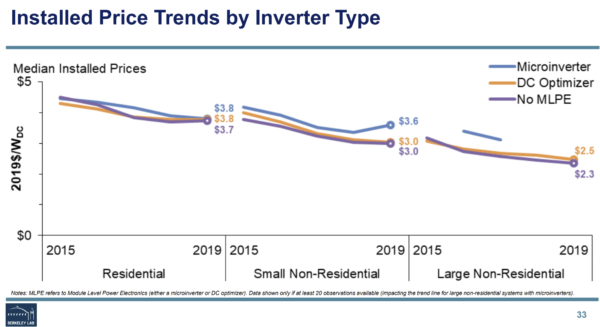
Because these components are still new to the market, their true long term life cycle is unknown. Both manufacturers, SolarEdge and Enphase, offer 25 years warranties for their hardware. Both companies were founded in 2006, meaning their first modules are no more than 15 years old now.
Eventually, solar inverters on your home and business might run the power grid. So, take your time to research what works best for you, and your roof.
pv magazine USA’s favorite operations and maintenance contributor has sounded the alarm: paying close attention to these connections is imperative.
In a subsequent Solar 101 article, we focus on system operations and maintenance, and will talk about how to keep these connections safe over the decades they need to run.
This content is protected by copyright and may not be reused. If you want to cooperate with us and would like to reuse some of our content, please contact: editors@pv-magazine.com.








By submitting this form you agree to pv magazine using your data for the purposes of publishing your comment.
Your personal data will only be disclosed or otherwise transmitted to third parties for the purposes of spam filtering or if this is necessary for technical maintenance of the website. Any other transfer to third parties will not take place unless this is justified on the basis of applicable data protection regulations or if pv magazine is legally obliged to do so.
You may revoke this consent at any time with effect for the future, in which case your personal data will be deleted immediately. Otherwise, your data will be deleted if pv magazine has processed your request or the purpose of data storage is fulfilled.
Further information on data privacy can be found in our Data Protection Policy.